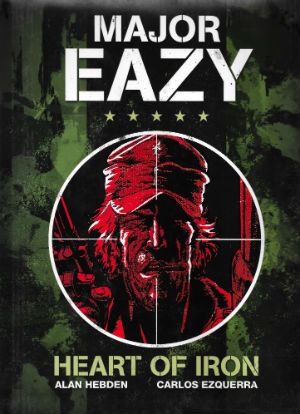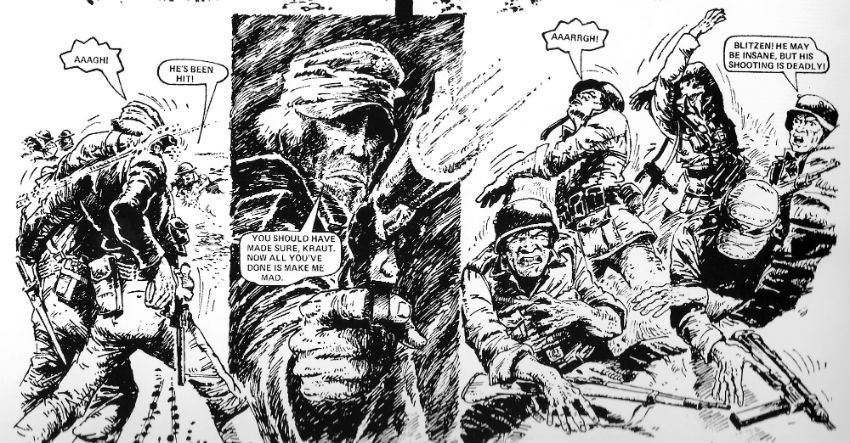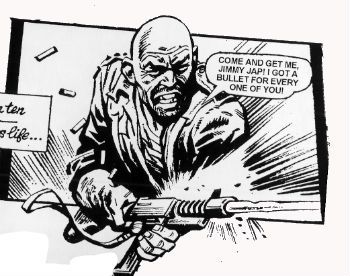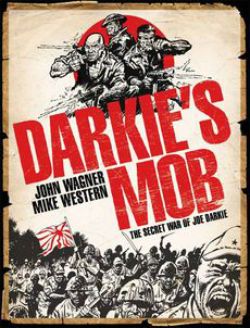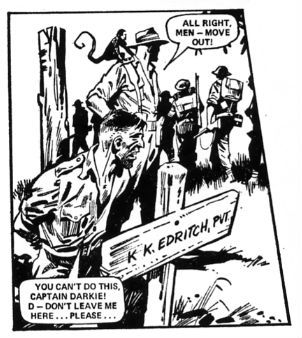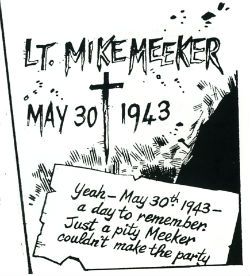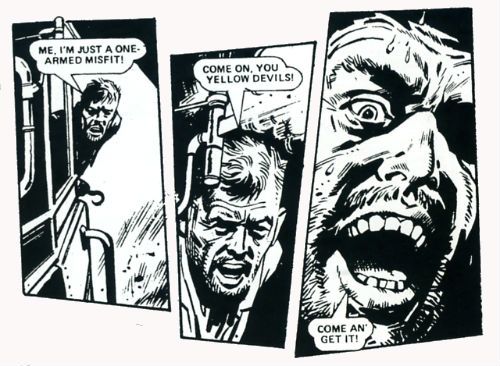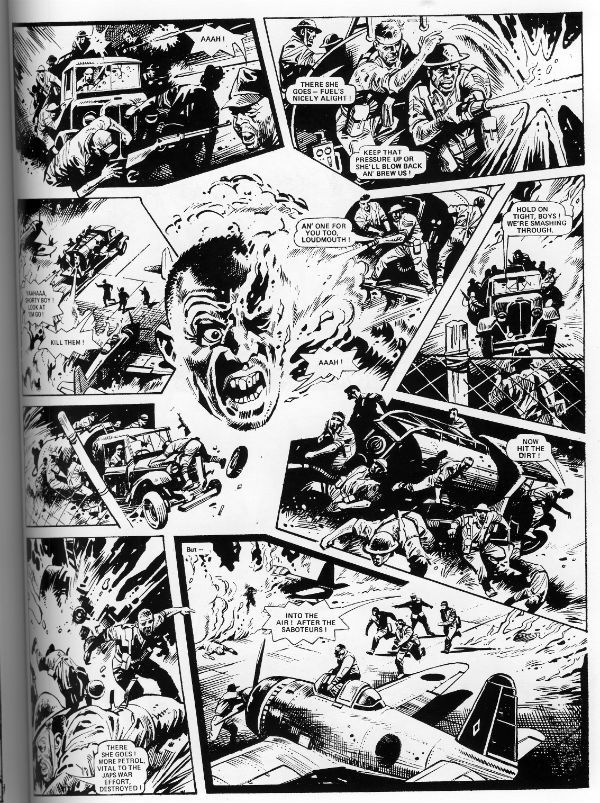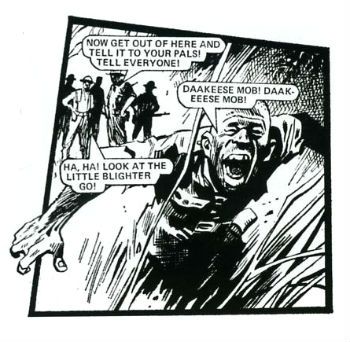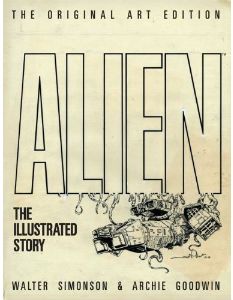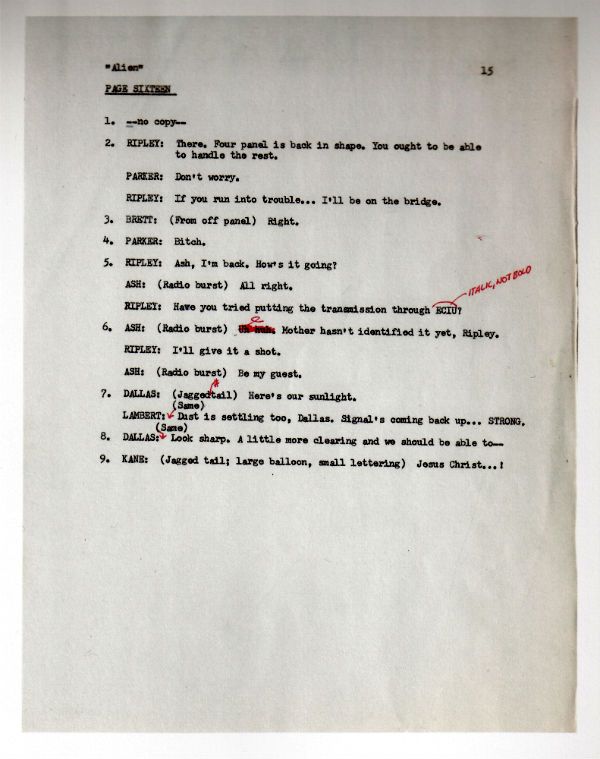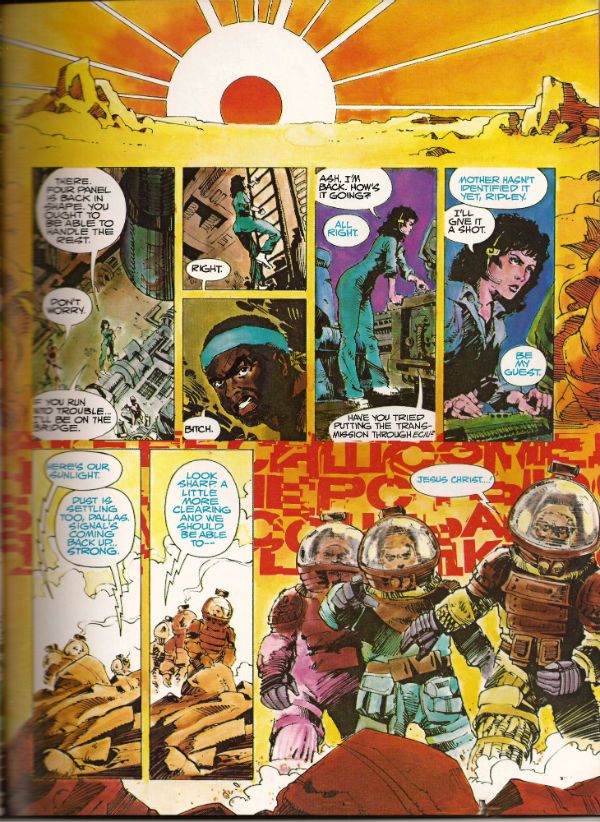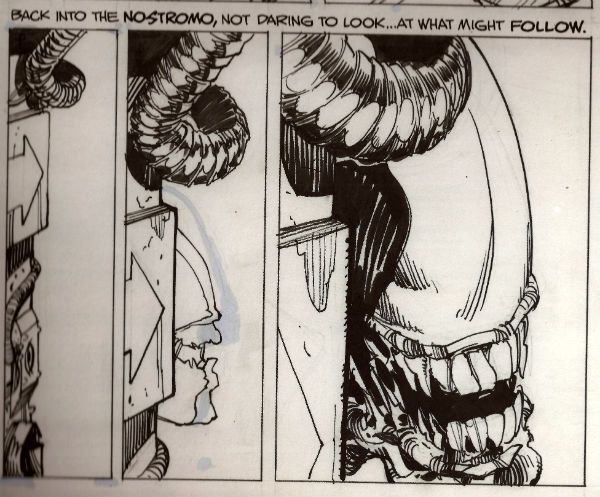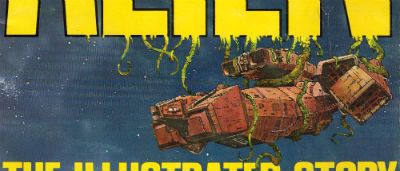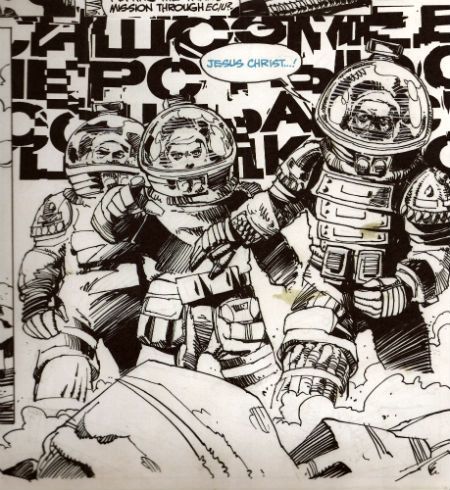“Run Scared And You End Up Running From Yourself." COMICS! Sometimes A Sunday Morning Is The Last Thing You’d Think To Compare Him to!
/Carlos Ezquerra. Alan Hebden. Major Eazy.
 Major Eazy by Carlos Ezquerra
Major Eazy by Carlos Ezquerra
Anyway, this… MAJOR EAZY: HEART OF IRON Art by Carlos Ezquerra Written by Alan Hebden Major Eazy created by Carlos Ezquerra & Alan Hebden Titan, 128 pages, B&W, £14.99 (2012)
This is a collection of comic strips from Battle Picture Weekly featuring the fondly recalled (by me and probably many other emotionally stunted middle-aged men) fictional character Major Eazy. The strips within detail his adventures in North Africa during the very real 2nd World War. Launched in 1976 Major Eazy, the creation of Alan Hebden & Carlos Ezquerra, quickly became a popular strip in an already popular comic. It featured a character who was visually James Coburn in Cross of Iron from the neck up and behaviourally beholden to Clint Eastwood’s character in Sergio Leone’s Man With No Name oaters. Eazy was a maverick (hence his suicidally inappropriate headgear and his Bentley) whose apparent lackadaisical style belied his killing efficiency. As a foil for expressions of awe at his antics Eazy was provided with Sergeant Daly; clearly, and amusingly, modelled on the 1970s sit-com mainstay Arthur Mullard. Since starting to sully this site I have thought about British comics harder and longer than ever before, and I am coming to the conclusion that Carlos Ezquerra, a Spaniard no less, was the single most important artist in 1970s British comics. He isn’t important because of Major Eazy, but Major Eazy is a part of that importance. Ezquerra’s fast and nasty style was a perfect fit with the fast and nasty Brit comics of the 1970s and he was in the best of all of them (Action, Battle, 2000AD) and, ultimately, he co-created the most enduring strip of all of them (Judge Dredd). And because the Comics crowd is now so huge so many get lost in the crush no one will be a rush to pin any Comics medals on Alan Hebden, his work here is certainly sturdy enough to remain entertaining decades later. No mean feat, that.
Major Eazy by Carlos Ezquerra & Alan Hebden
It’s mostly Hebden’s show as, despite his undoubted genius, Ezquerra’s visuals aren’t able to carry this book unaided due to, entirely reasonable given the material’s age, I guess, deficiencies in reproduction. While the book does present the strips at the right size (i.e. magazine size), unfortunately it necessarily reprints them at a remove of some decades. And, much like the UK public transport infrastructure since the 1970s, there’s been some degeneration. The worst affected are the once-colour pages which are now mushy looking and blurred, but even the regular originally B&W pages vary in quality. Some pages display Ezquerra’s evolving method of contrast (panels which almost glare via delicate hatching then hemmed in by grubbily dense panels) to fine effect, while other pages present an exciting challenge to the reader’s perceptual abilities. It's a mixed bag with the earlier pages faring worst, the majority of it reads just fine. But if you are used to the almost hallucinatory precision of modern comics reproduction this might not be the book for you.
Major Eazy by Carlos Ezquerra & Alan Hebden
But then these were comics intended for the moment, not comics intended for the ages; it’s testament to the strength of Hebden’s writing that these strips still entertain despite the frequently difficult to decipher visuals. These were also comics aimed straight at the brains of children and it’s totally to Hebden’s credit again that he not only introduces adult themes but that he handles them so nimbly. Kids’ comics they may well be, but they don’t shy too far away from war’s inhumanity. This is a children’s comic where the light and larky Kelly’s Heroes vibe (Eazy happily plays cards with the Germans between bombardments – until they cheat!) is regularly pierced by dark moments that flirt strongly with honest depictions of the depths war contains - a priest previously seen rescuing smiling children is found strung up from a tree, British troops are mistakenly shot down by an American plane, Eazy shoots a young woman in the back, a steam scalded German is allowed to suicide under Eazy’s eye, wounded troops die due to black market profiteering of essential medical supplies, and on, and on, and more besides.
Major Eazy by Carlos Ezquerra & Alan Hebden
Hebden doesn’t get away with everything though and there’s some fun to be had spotting the occasional comical editorial intervention. In the friendly fire episode the yank flier is clearly machine gunned to death by Eazy, yet the next panel finds Sgt Daly pointing with a hastily drawn arm to a yet more hastily drawn figure parachuting to safety in the distance. And then you get a story so harsh it’s staggering that editorial waved it past. There’s one particular cavalcade of chuckles featuring a Polish officer who, unhinged by the treatment of himself and his country at the hands of the German Army, embarks on a series of retaliatory atrocities. In one unpleasantly memorable scene Eazy surprises him in a barn going at a trussed up German with a straight razor and shortly thereafter everything ends admirably badly for everyone. Sure, these strips may be a bit rickety but there’s still power in their pages. And that power is all the more impressive for the brevity of each episode (3-pagers, done in ones; mostly). Intermittent visual shortcomings aside I enjoyed revisiting these strips; they are a lot darker and harder than I thought they were. (That probably goes for the 1970s too.) GOOD!
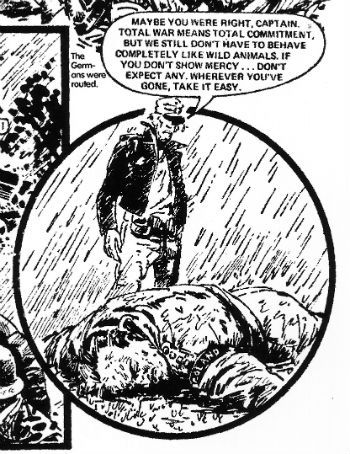 Major Eazy by Carlos Ezquerra & Alan Hebden
Major Eazy by Carlos Ezquerra & Alan Hebden
Of course the real horror is that during wartime they ration paper and that means no - COMICS!!!


